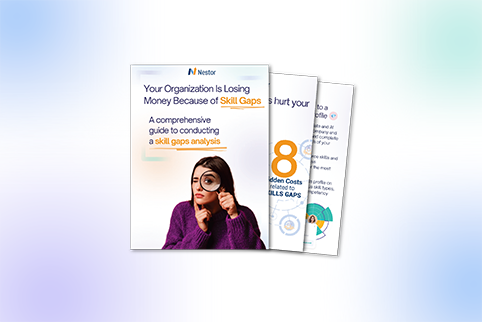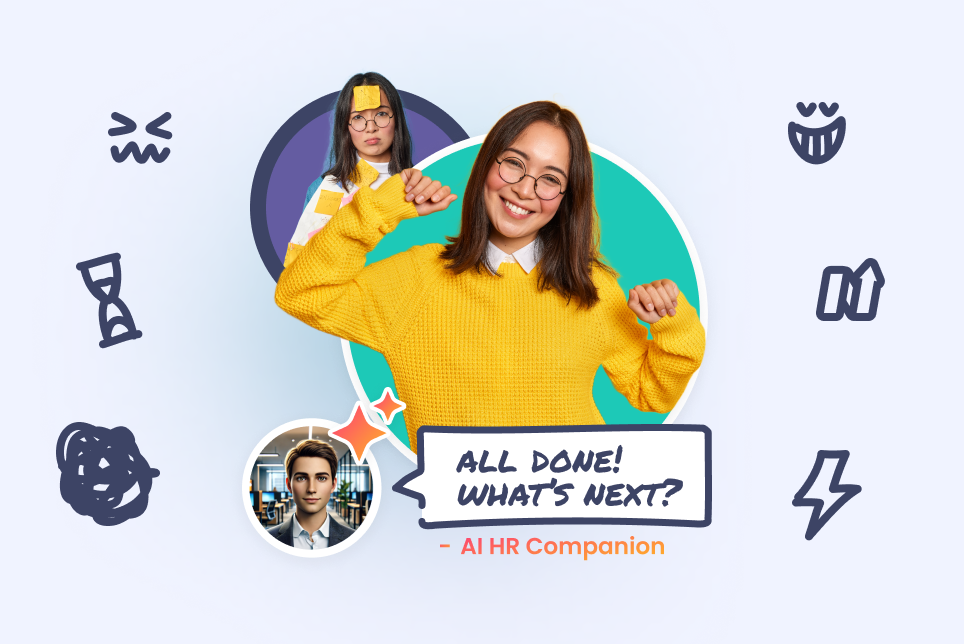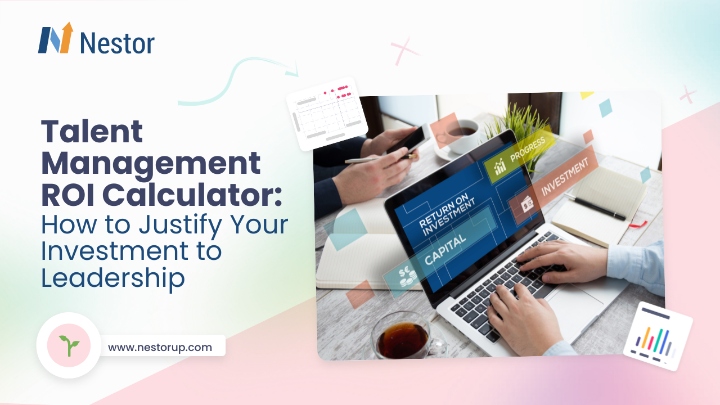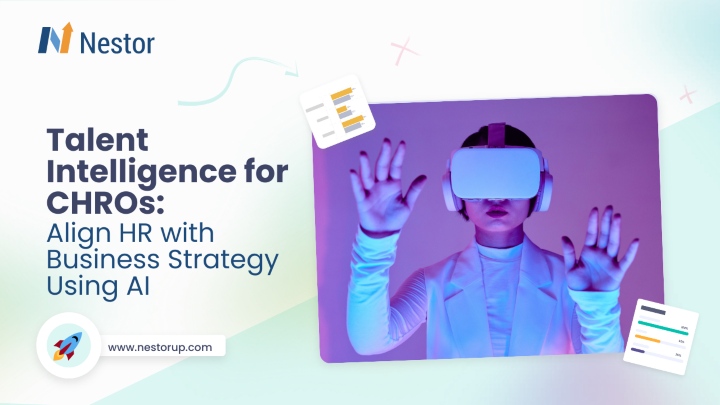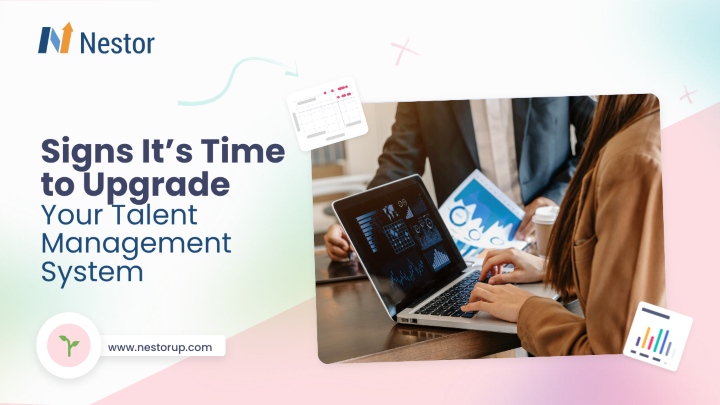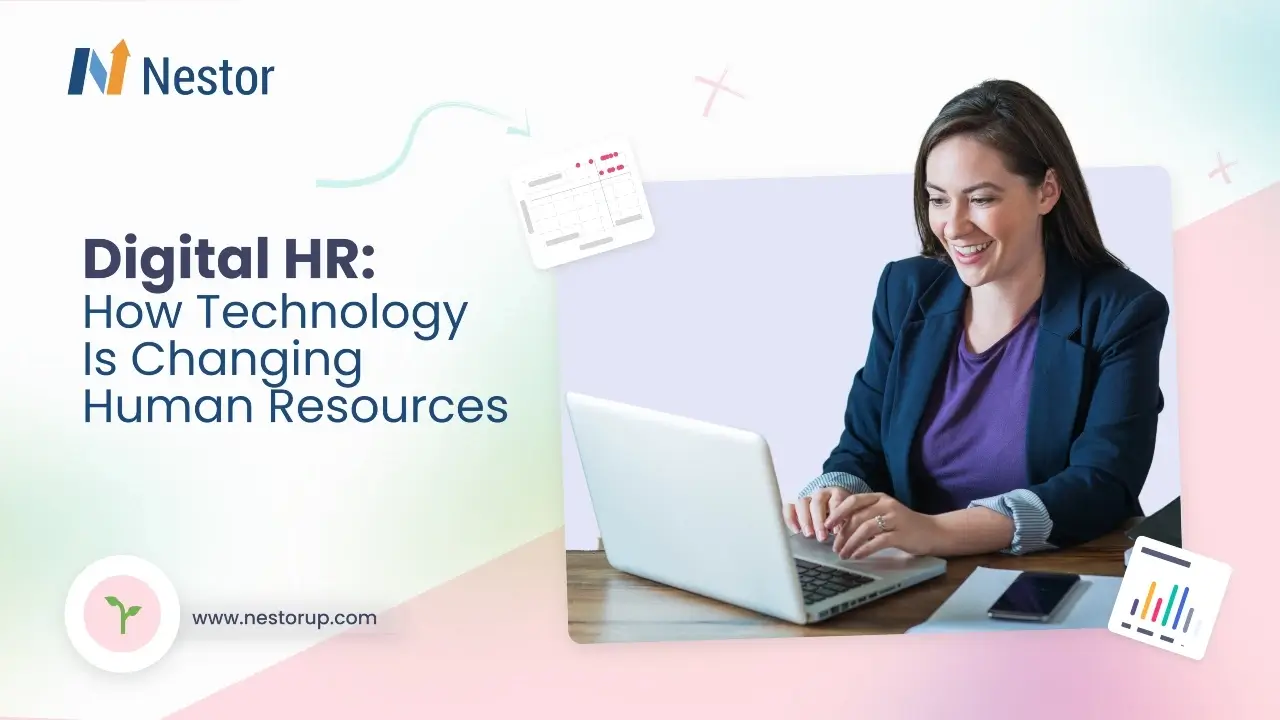
Contents
HR has always been about people, but the way companies manage their workforce has changed dramatically. Traditional HR relied on paperwork, manual approvals, and gut-feeling decisions. Today, digital HR helps businesses hire faster, engage employees better, and make smarter workforce decisions.
Companies using outdated HR systems are dealing with slow hiring, poor employee experience, and inefficient processes. Meanwhile, those leveraging AI, automation, and cloud-based HR platforms are streamlining operations and improving workplace culture.
In fact, 56% of HR leaders say that their organizations’ HR technology doesn’t meet their needs, highlighting a significant gap in efficiency and innovation. So, why are some companies still hesitant to upgrade? Fear of change? Cost concerns? The belief that HR should be purely human-driven? Ironically, sticking to manual processes doesn’t make HR more human, it makes it slower and more frustrating.
If your HR team is still buried in spreadsheets, it’s time to rethink the approach. Digital HR isn’t the future. It’s the present. The only question is: Are you keeping up? Let’s get started.
What is Digital HR?
Digital HR is the integration of technology, AI, big data, and automation into Human Resources. It’s about moving away from outdated, manual processes and using tech to streamline everything from recruiting to employee performance tracking.
But let’s be clear, this transformation isn’t about replacing the HR team with machines. Instead, it’s about enhancing HR capabilities with the right tools to streamline processes, improve decision-making, and create a more engaging experience for both employees and employers.
In fact, according to HR thought leader Dave Ulrich, the digital HR journey can be divided into four distinct phases that help companies gradually integrate technology in a meaningful way. These phases include:
- HR Efficiency: At this stage, organizations adopt technology platforms that help manage HR tasks more effectively. The question to ask is: How can we use technology to simplify administrative HR work?
- HR Effectiveness: Here, HR tech is leveraged to improve people practices, like performance management, talent acquisition, and employee training. The critical question is: How can we use technology to enhance and innovate our HR practices?
- Information: This phase is where organizations begin utilizing data analytics to create significant business impact. With the combination of internal and external data, the key question is: How can we use technology to make data-driven decisions and access crucial insights?
- Connection/Experience: The final phase uses digital tools to connect people, creating a sense of belonging and fostering meaningful relationships within the workplace. The pivotal question to ask is: How can we leverage technology to build connections and enhance employee experience?
By the end of this journey, organizations don’t just adopt new technologies; they experience a full digital transformation in HR, reshaping both operations and the way work gets done.
Core aspects of Digital HR:
Digital HR includes a variety of tools and technologies designed to streamline HR operations:
- HR Software & Cloud Platforms – Automates payroll, benefits administration, time tracking, and performance reviews. Employees can access their HR information anytime, reducing administrative burdens.
- AI-Driven Recruitment – Identifies the best candidates faster by screening resumes, matching skills with job descriptions, and reducing hiring bias.
- HR Analytics – Uses workforce data to improve decision-making in areas like employee retention, diversity, and workforce planning.
- Employee Experience Platforms (EXPs) – Enhances engagement by offering personalized career development paths, well-being tracking, and digital tools for remote collaboration.
This shift is about making HR more strategic. Instead of getting stuck in administrative tasks, HR professionals can focus on workforce planning, leadership development, and company culture.
Less paperwork. Faster decisions. A better workplace. Isn’t that the whole point?
How HR Has Transformed: From Paper to AI
HR has changed more in the last two decades than it did in the previous century. The shift hasn’t been gradual; it has been rapid, necessary, and irreversible.
The Paper Era (Pre-2000s): HR’s Manual Struggle
Before technology entered the picture, HR was defined by administrative work. Filing cabinets overflowed with employee records. Payroll was a slow, error-prone process. Every HR task required forms, approvals, and physical signatures.
- Recruitment was painfully slow. Hiring managers sifted through stacks of resumes, relying on instinct rather than data.
- Employee records were stored in folders. Misplacing a file meant hours of searching.
- Payroll and benefits administration were manual. Paperwork delays often led to paycheck errors.
- Decision-making lacked real insights. HR professionals had little to no access to real-time workforce data.
HR teams spent most of their time managing processes, not people. This approach worked when companies were smaller, but as businesses grew, manual HR simply couldn’t keep up.
The Software Revolution (2000s – 2010s): HR Goes Digital
As businesses expanded, so did the demand for efficiency. HR departments needed a way to automate repetitive tasks and organize data more effectively. This era saw the rise of HR Management Systems (HRMS)—software designed to streamline HR operations.
- Payroll automation reduced errors and ensured employees were paid on time.
- Digital databases replaced filing cabinets, making employee records accessible with a few clicks.
- Applicant Tracking Systems (ATS) simplified hiring by digitizing resumes and tracking applicants.
- Employee self-service portals allowed staff to update personal details and request time off without paperwork.
This period marked a major shift. HR was no longer drowning in administrative work. Technology helped speed up processes, but HR was still largely reactive—solving problems after they happened rather than preventing them.
The AI & Cloud Shift (2015 – Today): Digital HR Takes Over
The real transformation began when AI, big data, and cloud computing entered HR. Instead of just automating tasks, HR technology started predicting outcomes, identifying trends, and enhancing employee experiences.
- AI shortlists candidates in seconds, reducing hiring time. Algorithms analyze resumes and match applicants to job descriptions with higher accuracy than manual screening.
- Predictive analytics forecasts workforce trends, helping companies plan hiring, retention, and employee development strategies.
- Self-service HR platforms empower employees. Need to check benefits, update payroll details, or enroll in training? Employees can do it themselves without waiting on HR.
- Cloud-based HR systems allow remote access, making HR fully functional from anywhere.
This phase of HR evolution turned HR into a data-driven function. Instead of just managing employees, HR teams could now anticipate needs, improve workplace culture, and contribute to business strategy.
The Future of HR (2025 & Beyond): AI-Powered Personalization
HR isn’t done evolving. The next phase will focus on hyper-personalization, AI-driven decision-making, and workplace well-being.
- AI-driven learning & development: Employees will receive customized training programs based on their skills and career aspirations.
- Mental health technology: AI will detect burnout patterns and suggest interventions before productivity drops.
- Hybrid work optimization: Companies will use digital tools to ensure remote and in-office employees stay connected and engaged.
- More strategic HR roles: With automation handling admin work, HR professionals will focus on leadership development, culture-building, and business impact.
Employees who use AI in their jobs are 90% more likely to have high productivity rates, showcasing the clear link between AI adoption and enhanced performance. Companies that embrace digital HR will attract top talent, make smarter workforce decisions, and create better workplaces. Those that don’t will struggle to keep up.
Key Components of Digital HR
HR technology is transforming the way organizations manage talent. No longer restricted to basic administrative functions, modern HR tools are now sophisticated systems that improve recruitment, streamline workflows, and support employee growth.
The result? HR teams are more strategic, focused on improving employee experiences, and equipped with data to make better decisions.
The Essential Tools of Digital HR
Today, a robust HR tech stack is integral to supporting the entire employee lifecycle; from recruitment and onboarding to performance tracking and career development.
HR Management Systems (HRMS)
HRMS platforms are central to modern HR operations. These systems automate and integrate many of the core HR tasks that were once done manually, saving HR teams time and reducing the risk of human error.
- Payroll and Benefits Management: HRMS platforms allow HR professionals to automate payroll processes, including calculating wages, deductions, and tax withholding. This automation reduces administrative time and ensures accuracy in paychecks. Additionally, HRMS tools help manage employee benefits, such as health insurance, retirement plans, and other perks, ensuring compliance with legal requirements and company policies.
- Attendance and Time Management: Tracking employee attendance, leave requests, and working hours can be cumbersome without the right tools. HRMS systems provide accurate, real-time data on employee time and attendance, improving scheduling, reducing absenteeism, and ensuring compliance with labor laws.
- Employee Records Management: HRMS platforms centralize employee data, from basic contact information to performance records, making it easier for HR teams to access and update information as needed. The centralized nature of these systems also makes audits and compliance checks more straightforward.
Applicant Tracking Systems (ATS)
An Applicant Tracking System (ATS) revolutionizes the recruitment process by helping HR teams manage the large volumes of job applications they receive daily. ATS platforms use AI to screen resumes, rank candidates, and match them to job descriptions.
- AI-Powered Candidate Screening: ATS tools scan resumes for keywords and qualifications that align with the job posting, eliminating the need for HR professionals to manually sift through hundreds of applications. This AI-driven process significantly speeds up recruitment and ensures that only the most qualified candidates are prioritized.
- Candidate Ranking and Scoring: Once resumes are screened, ATS platforms rank candidates based on how well they meet the criteria. This automated ranking system allows HR professionals to quickly identify top candidates, saving time and resources in the hiring process.
- Interview Scheduling and Communication: ATS tools also streamline the interview process by automating candidate communications, including interview scheduling and feedback collection. This creates a more efficient and seamless experience for both HR and applicants. Additionally, 86% of companies use video interviews as part of their recruiting process, further enhancing efficiency by enabling remote interactions and making it easier to connect with candidates globally.
Learning Management Systems (LMS)
Learning Management Systems (LMS) are key to employee development and training. These platforms deliver tailored, scalable learning experiences for employees, enabling organizations to foster a culture of continuous learning.
- Personalized Training Programs: An LMS allows HR teams to create training programs based on employees’ specific roles, career aspirations, and skill gaps. Personalized learning paths help employees progress in their careers while ensuring that training aligns with company objectives and employee needs.
- Tracking Learning Progress: LMS platforms track employee learning progress, allowing HR professionals to monitor completion rates, course engagement, and assessment scores. This data helps HR ensure that employees are gaining the necessary skills to succeed in their roles and supports the creation of targeted development plans.
- Compliance Training: Many industries require regular compliance training to ensure that employees are up to date with regulations and safety standards. An LMS simplifies the delivery and tracking of compliance courses, ensuring that training requirements are met in a timely and efficient manner.
Performance Management Platforms
Performance management platforms automate the tracking, evaluation, and feedback processes, helping HR teams ensure that employee performance is continuously aligned with company goals.
- Continuous Feedback and Goal Setting: Traditional performance reviews are typically annual, but performance management platforms enable ongoing feedback and goal-setting throughout the year. HR teams can set specific, measurable goals for employees, monitor their progress, and provide real-time feedback, fostering a culture of continuous improvement.
- Employee Self-Assessment and Manager Reviews: These platforms often include self-assessment tools that allow employees to evaluate their own performance, as well as manager reviews that offer insights into employee strengths and areas for development. This comprehensive feedback process enhances communication between employees and managers, improving clarity and transparency.
- Data-Driven Insights: Performance management platforms collect data on individual and team performance, allowing HR teams to identify trends, recognize high performers, and spot areas that require additional support or training. This data-driven approach ensures that performance management is more objective and based on actual results.
Artificial Intelligence & Automation: The Power Behind HR Efficiency
AI and automation have made it possible for HR departments to shift from reactive problem-solving to predictive, data-driven decision-making. These technologies enable HR teams to stay one step ahead by addressing potential issues before they become problems.
What AI & Automation Bring to HR:
- Automated Candidate Screening: AI tools don’t just save time; they help reduce bias in recruitment. They scan resumes, match candidates with job descriptions, and even predict their likelihood of success at the company.
- Predictive Analytics for Retention: AI analyzes employee data to highlight trends and predict which employees might be at risk of leaving. With this information, HR can take proactive steps to improve retention before it’s too late.
- Automated Onboarding: AI-driven onboarding tools help new hires get up to speed quickly. From filling out forms to familiarizing themselves with company policies, AI can guide them through every step of the process, enhancing the new hire experience.
- HR Chatbots: Chatbots provide instant, round-the-clock assistance for both employees and HR teams. Whether it’s answering policy questions or helping employees submit leave requests, chatbots free up time for HR to focus on more strategic initiatives.
In fact, 73% of businesses are already using generative AI in some form, and this trend is expected to grow across industries, including HR. This shift toward automation not only elevates the role of HR but also creates a more personalized, responsive work environment.
Cloud-Based HR: Flexibility at Its Best
Cloud technology has opened up new possibilities for HR teams by allowing them to access employee data anytime, anywhere.
Why Cloud HR is a Game-Changer:
- On-Demand Access: HR teams can log in from any location, whether they’re working remotely or in the office. This allows for greater flexibility and ensures that teams can access and update data in real time, no matter where they are.
- Security & Compliance: Cloud-based systems are equipped with robust security protocols and automatic updates that ensure HR data remains compliant with industry regulations, like GDPR and labor laws.
- Scalability & Cost-Effectiveness: As businesses grow, their HR needs grow too. Cloud HR systems are scalable, meaning organizations can add or remove functionalities as needed. They also offer more cost-effective solutions, as businesses no longer need to invest in physical infrastructure or extensive IT support.
HR Analytics: Making Smarter Decisions
With the right tools, HR can leverage data to make informed decisions that directly affect employee satisfaction, productivity, and retention.
How HR Analytics Transforms Decision-Making:
- Predicting Employee Turnover: Data analytics can identify early warning signs of turnover, such as decreased engagement or performance dips. HR teams can then intervene with personalized retention strategies.
- Measuring Diversity & Inclusion: By tracking diversity metrics, HR can ensure that the organization is moving toward a more inclusive workplace. These insights can drive meaningful change, fostering a more diverse and equitable environment.
- Tracking Performance: Analytics help HR track employee performance and engagement in real time. This data provides a clear picture of how teams are performing, where they’re excelling, and where they need improvement. It also enables HR to deliver personalized feedback to employees, improving morale and performance.
Employee Experience Platforms (EXPs): Transforming the Workplace Culture
Happy employees perform better. Employee Experience Platforms (EXPs) offer tools to enhance well-being, boost engagement, and support career growth.
How EXPs Improve Employee Engagement
- Tracking Well-Being & Mental Health: Many EXPs integrate features that monitor employee stress and overall well-being. By identifying signs of burnout or anxiety early on, HR can intervene with support programs and resources.
- Personalized Career Development: EXPs assess employee strengths and career aspirations, offering personalized development plans that align with their goals. This helps retain top talent by showing employees that their growth matters.
- Support for Remote Teams: EXPs provide virtual collaboration tools, making it easier for remote teams to stay connected. Whether it’s for team meetings or one-on-one check-ins, these platforms help foster a sense of community.
Why Digital HR is Essential
As companies continue to navigate through a highly competitive labor market, talent acquisition and employee engagement have become key to success. In fact, companies that fail to modernize their HR operations don’t just risk falling behind; they risk losing top talent to more agile competitors.
And the truth is, employees today are not just looking for a paycheck. They expect seamless, tech-driven experiences that make their work lives easier and more enjoyable. Here’s why Digital HR matters:
Reduces Administrative Workload
Traditional HR tasks—managing payroll, handling benefits, processing approvals—are time-consuming and often prone to human error. Automation takes the weight off HR teams by handling these repetitive administrative tasks, giving HR professionals more time to focus on strategy, talent development, and culture-building.
- Automates routine processes like leave requests, time tracking, and expense management.
- Streamlines communication through automated reminders and notifications.
- Reduces errors in payroll and benefits, leading to more accurate and reliable data.
Enhances Employee Experience
Employee experience is a key factor in retention and productivity, and digital tools are at the heart of this shift. Employees today expect modern, user-friendly platforms that allow them to manage their own HR needs. With digital HR solutions, companies can provide a smoother, more personalized experience for their employees.
- Self-service portals allow employees to easily access and update personal information, request time off, and track benefits.
- Digital learning tools provide personalized training programs, making professional development easier.
- Continuous feedback systems give employees the chance to receive real-time feedback on performance, helping them grow.
Speeds up Hiring
One of the most noticeable impacts of Digital HR is the acceleration of hiring processes. In the traditional recruitment cycle, recruiters often sifted through piles of resumes manually, a process that was not only slow but also prone to human error and bias. Digital tools—specifically AI-powered applicant tracking systems (ATS)—have completely transformed this process.
- AI-driven ATS can screen resumes within seconds, identifying the best candidates based on keywords, experience, and qualifications.
- Automated interview scheduling ensures no time is wasted finding mutual availability.
- Real-time data on candidate pools allows HR teams to make faster, informed decisions.
Improves Decision-Making
Digital HR doesn’t just streamline operations—it also empowers HR professionals to make smarter, more data-driven decisions. Traditional HR management relied heavily on intuition and experience, which often led to subjective, reactive decision-making. But with HR analytics, organizations can move from a reactive to a proactive approach.
- Predictive analytics helps HR anticipate workforce trends, like potential turnover, skill gaps, and the need for new hires.
- Employee engagement analytics highlight areas of improvement within the company, helping HR take action before issues escalate.
- Diversity and inclusion data tracks hiring trends and employee satisfaction, helping businesses ensure a fair and inclusive workplace.
Boosts Compliance and Security
Staying compliant with labor laws and regulations is an ongoing challenge for businesses. With the rapid pace of legal changes and the complexity of local, state, and federal laws, staying on top of compliance is a daunting task. However, digital HR systems can ensure compliance is built into the workflow, reducing risk and simplifying reporting.
- Automated compliance checks ensure that employee data and processes meet legal requirements.
- Digital tools track deadlines for things like performance reviews, tax filings, and benefits enrollment, ensuring timely action.
- Data security features protect sensitive employee data, ensuring it is encrypted and securely stored.
Ignoring Digital HR Isn’t Just Inefficient – It’s Costly
Sticking to outdated, manual HR processes is not only inefficient, but it also carries a heavy cost. When HR teams are bogged down with administrative work, they have less time to focus on more strategic initiatives like talent development and company culture. This leads to missed opportunities for growth and innovation. Additionally, the risks associated with human error, compliance violations, and slow hiring processes can add up quickly.
- Lost productivity: HR teams spend too much time on repetitive tasks instead of focusing on strategic initiatives.
- High turnover: A poor employee experience often leads to higher turnover rates, which increases recruitment and training costs.
- Legal risks: Non-compliance with labor laws and data protection regulations can result in costly fines and damage to the company’s reputation.
Digital HR tools provide the framework for reducing these risks, increasing productivity, and improving decision-making. The cost of not modernizing HR is simply too high.
The Biggest Digital HR Trends for 2025
HR is moving fast, and staying ahead means embracing new technologies. Here’s what to expect in 2025:
AI-Powered Recruitment
AI will continue to speed up the hiring process. It’s already making waves in candidate screening, but by 2025, AI will be integral to recruitment, helping companies find the right talent faster and with greater precision.
- Automated resume screening: AI will quickly sift through resumes, identifying top candidates in seconds.
- Predictive hiring tools: These tools will evaluate skills, fit, and potential to match the best candidates with the right roles.
This shift means reduced hiring time and a more efficient process.
Self-Service HR Platforms
By 2025, employees will manage their HR needs themselves. From updating benefits to accessing training resources, self-service platforms are designed to empower employees and reduce HR’s administrative load.
- Instant access to benefits, policies, and payroll
- Training and development on demand
- HR chatbots to handle inquiries
These tools allow employees more control, making HR processes smoother for everyone.
Remote & Hybrid Work Technology
Remote and hybrid work models aren’t going away, and HR technology will adapt to support them. Expect new digital tools that make remote work easier and more collaborative.
- Enhanced video conferencing and team collaboration tools
- Smart scheduling and virtual team-building activities
- Seamless communication across global teams
This technology ensures that remote teams stay connected and productive, no matter where they are.
AI-Driven Learning & Development
Learning and development will be tailored to individual needs, thanks to AI. Employees will have access to personalized learning paths that fit their career goals and performance data.
- AI-generated personalized learning plans
- On-demand microlearning resources
- Real-time performance feedback
AI will ensure continuous growth, improving employee skills and driving internal talent development.
Mental Health Tech
In 2025, HR will be focused on supporting employees’ mental health with technology. AI tools will detect stress levels, burnout, and overall well-being, offering early intervention.
- AI-driven wellness apps to monitor employee health
- Virtual counseling and wellness support
- Well-being analytics to adjust HR policies
With these tools, companies will be able to prevent burnout and keep their teams healthier.
How to Implement Digital HR (Without the Headache)
The idea of shifting to Digital HR may sound daunting, but it doesn’t need to be. In fact, it’s easier than you think, as long as you follow a clear and strategic plan. Here’s a step-by-step approach that ensures a smooth, efficient rollout of new systems.
Step 1: Audit Your Current HR Tech
Before diving into new systems, take a moment to evaluate your existing HR technology. Are there gaps? Is there overlap? How much time do HR professionals spend on manual tasks? You’ll need to get a complete picture of what’s working and what isn’t.
- Identify inefficiencies: Look at processes that could be streamlined, like payroll, performance reviews, or employee data management.
- Assess your current tools: Do they meet your company’s growing needs, or are they outdated?
- Evaluate user experience: Speak with HR staff and employees to find pain points. What isn’t working from their perspective?
Once you know where your current systems are falling short, you can plan out the improvements.
Step 2: Set Clear Goals
Successful implementation starts with setting clear objectives. What do you hope to achieve by going digital? Without clearly defined goals, you’ll struggle to measure success down the road. Your goals will shape the tools you choose and the metrics you track.
- Speed up recruitment: If hiring is taking too long, your goal might be reducing time-to-hire with AI tools.
- Improve engagement: If employee engagement is low, you could focus on using employee experience platforms to boost morale and satisfaction.
- Streamline administrative tasks: If HR is bogged down with paperwork, automating those tasks could be the priority.
When you set specific, measurable goals, the path forward becomes much clearer.
Step 3: Pick the Right Tools
Choosing the right technology is crucial, but it’s easy to get overwhelmed with the number of options out there. It’s not just about picking the most popular tools; it’s about selecting what will work for your company size, needs, and future growth.
- HRMS (Human Resource Management System): Make sure it aligns with your HR objectives, whether it’s managing payroll or performance tracking.
- Applicant Tracking System (ATS): A good ATS can cut down on hiring time and improve your recruitment process.
- Employee Experience Platforms (EXPs): These tools can improve engagement, wellness, and communication.
Pick tools that integrate well with each other and the systems you already have in place. You’ll want technology that works together seamlessly, not platforms that need to be constantly managed or patched together.
Step 4: Get Leadership Support
Your company’s leadership team must be on board with the transition to Digital HR. Without their support, the project may face resistance, lack of funding, or even failure. You’ll need to show executives how Digital HR can positively impact the business.
- Emphasize ROI: Share how automation and streamlined processes save time, allowing HR teams to focus on strategic tasks instead of paperwork.
- Highlight cost savings: For example, automated hiring systems help cut down on the cost per hire by improving the speed and quality of recruitment.
- Focus on business benefits: Digital HR tools also support improved decision-making through better data and analytics.
Make sure leadership understands that the upfront investment in Digital HR will lead to long-term savings, better talent acquisition, and more engaged employees.
Step 5: Train Your HR Team
Technology is only useful if your team knows how to use it. Proper training ensures that HR staff can fully leverage new systems and tools. Without sufficient training, you’ll risk wasting valuable time and resources.
- Comprehensive training programs: Offer training sessions that cover all aspects of the new tools, from onboarding to performance reviews.
- Ongoing support: After initial training, provide continuous access to support materials, troubleshooting guides, or on-demand assistance.
- Get feedback: Regularly ask for feedback from your HR team about the training process to ensure they feel comfortable and confident using the new systems.
A well-trained HR team will not only embrace the technology but also maximize its potential to enhance the employee experience.
Step 6: Integrate with Existing Systems
Digital HR tools need to work seamlessly with the systems you already have. If your new platform doesn’t integrate with payroll, finance, or other HR tools, it can create bottlenecks and frustrations. Integration is essential for smooth operations.
- Check for compatibility: Before purchasing any new software, verify that it will work with your existing HR systems.
- Consider data migration: Ensure that transitioning data from your old systems to the new ones won’t disrupt HR processes or lead to data loss.
- Streamline workflows: The goal is to make daily HR tasks easier—not create more hurdles. Integration should simplify workflows, not complicate them.
The smoother the integration process, the faster you’ll see the benefits of Digital HR.
Step 7: Measure Success & Optimize
You can’t improve what you don’t measure. It’s crucial to track the performance of the new systems to ensure that they’re delivering on your goals. After all, the purpose of Digital HR is to boost efficiency, engagement, and overall HR effectiveness.
- Set KPIs (Key Performance Indicators): These could include metrics like time-to-hire, employee satisfaction scores, or the cost of HR operations.
- Monitor performance: Continuously track how well the new systems are meeting your goals. Are you hiring faster? Are employees more engaged?
- Refine your approach: Based on the data, make necessary adjustments. If something’s not working as expected, be ready to pivot.
The key to long-term success with Digital HR is optimizing and improving over time. You’ll want to continuously review and adjust your strategy based on real-time insights.
Challenges of Digital HR (And How to Overcome Them)
While Digital HR can bring substantial benefits to an organization, it doesn’t come without its challenges. Understanding these challenges is crucial for creating a successful implementation plan. Whether it’s resistance to change or data security concerns, being proactive in addressing these obstacles will ensure a smoother transition and stronger results.
Resistance to Change
It’s no secret that people are resistant to change, especially when it involves adopting new technology. HR teams are no exception. The fear of the unknown or the comfort of established processes can make the idea of switching to Digital HR seem intimidating. However, it’s crucial to approach this challenge with a well-thought-out plan.
- Training: Offer continuous training to help staff gain confidence with the new system.
- Clear Communication: Explain the benefits of Digital HR, showing how it will make their work easier.
- Involve HR Early: Get their feedback to ensure the new tools meet their needs.
Data Security Concerns
Data security is a serious concern, especially when managing sensitive employee information. HR teams are responsible for handling a wealth of personal data, from social security numbers to salary information. Implementing Digital HR means trusting external platforms and systems with that data, which can be daunting. In fact, 21% of HR managers are worried about how secure their data is when stored in the cloud.
- Secure, Compliant Tools: Ensure the HR software follows industry regulations like GDPR.
- Regular Audits: Regular security checks will help maintain safe practices.
- Employee Training: Educate HR on the importance of handling data securely.
Integration Issues
Digital HR tools often need to work with other existing systems, such as payroll, finance, or project management software. Integration challenges are common, especially if the current systems are outdated or the new software is not API-friendly.
- API-Friendly Software: Choose tools that integrate easily with other software.
- Involve IT Early: IT professionals should ensure a seamless connection between systems.
- Phased Rollouts: Implement systems gradually to reduce disruption.
High Costs
One of the biggest concerns for many businesses is the cost of implementing Digital HR. The initial investment for software and training can be high, and it can be tempting to avoid digital transformation altogether.
- Long-Term ROI: Focus on the cost savings and efficiency improvements that will come over time.
- Cloud-Based Solutions: Opt for cloud platforms with lower upfront costs and scalability.
- Phased Rollouts: Implement new tools in stages to manage costs effectively
Keeping HR Human
One of the biggest fears when adopting Digital HR is that it will depersonalize the HR function. The human element of HR is essential, it’s what builds trust with employees, resolves conflicts, and provides a sense of belonging.
- Enhance, Don’t Replace: Use automation to handle repetitive tasks, allowing HR teams to focus on people.
- Maintain Personal Interaction: Encourage HR to use the time saved for meaningful employee interactions.
- Feedback: Regularly check employee satisfaction to ensure the personal touch is maintained.
Final Thoughts on Digital HR
Embracing Digital HR means overcoming some initial hurdles, but the payoff is immense. From reducing administrative burdens and improving hiring processes to creating more personalized employee experiences, the benefits are clear. With the right tools, training, and mindset, businesses can transform HR into a strategic powerhouse that drives performance and success.
The future of HR isn’t coming. It’s already here. The question is, are you ready for it?
Frequently Asked Questions (FAQ) About Digital HR
What is Digital HR?
Digital HR refers to the use of technology to streamline and enhance HR processes. This involves the integration of tools such as AI, cloud-based HR platforms, automation, and data analytics to manage functions like recruitment, performance management, employee engagement, and more.
How does Digital HR improve hiring?
Digital HR uses AI and automation to streamline the hiring process. AI can quickly scan resumes, shortlist candidates, and match them with job descriptions. This not only speeds up the process but also reduces human bias, allowing companies to find the right fit more efficiently. Additionally, digital platforms enable recruiters to track candidates, collaborate with hiring managers, and make data-driven decisions.
What are the main components of Digital HR?
Digital HR encompasses various tools such as HR Management Systems (HRMS), Applicant Tracking Systems (ATS), Learning Management Systems (LMS), performance management tools, and Employee Experience Platforms (EXPs). These platforms help manage everything from payroll and attendance to employee training, performance tracking, and engagement.
How can we measure the success of Digital HR?
The success of Digital HR can be measured by tracking key metrics such as employee engagement, time to hire, retention rates, and efficiency gains. For example, reducing the time it takes to fill a position or increasing employee satisfaction through digital tools are good indicators of success. Cost savings from automation and error reduction also demonstrate positive outcomes.
How do I get started with Digital HR?
To get started with Digital HR, begin by auditing your current HR systems to identify inefficiencies. Set clear goals for what you want to achieve, such as faster hiring or better employee engagement. Choose the right tools that align with your goals and budget. Ensure leadership support for the initiative, and provide training for your HR team.
What are the key trends in Digital HR for 2025 and beyond?
In the coming years, we can expect trends such as AI-powered recruitment, self-service HR platforms, remote and hybrid work tools, personalized learning and development, and mental health tech. These trends reflect the growing need for more efficient, employee-focused solutions and the increasing role of AI in managing HR functions.



